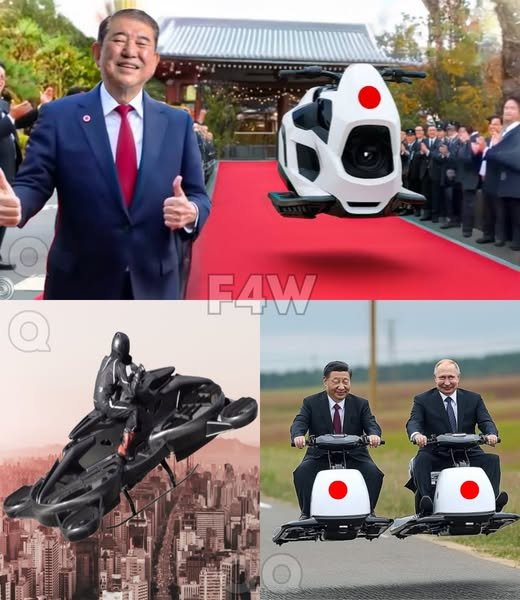Imagine soaring above the snarled traffic of a bustling city, gliding effortlessly through the air on a sleek, futuristic
scooter. This is no longer science fiction. The latest breakthrough in personal transportation comes from Japan, where BYD, a leading
electric vehicle manufacturer, has unveiled a $2,000 flying scooter that promises to revolutionize urban mobility. On paper, it sounds like a dream come true: affordable, eco-friendly, and capable of bypassing traffic jams with ease. But beneath the excitement lies a complex debate about safety, accessibility, and the very future of urban life.
Priced at roughly $2,000 to $3,000, this flying scooter is astonishingly affordable compared to other electric vertical takeoff and landing (eVTOL) vehicles, which often cost tens or hundreds of thousands of dollars. Its compact design, powered by advanced electric propulsion and vertical takeoff and landing technology, allows users to take off from small urban spaces and fly up to speeds of 120 km/h. With features like AI-powered obstacle detection, gyroscopic stabilization, and smart connectivity, the scooter blends cutting-edge technology with user-friendly controls, making personal flight accessible to everyday commuters and thrill-seekers alike.
Yet, this innovation raises urgent questions. Can our cities handle a flood of flying scooters buzzing overhead? Airspace regulation, noise pollution, and safety protocols for low-altitude urban flight remain largely uncharted territory. Critics argue that introducing thousands of personal flying vehicles could create chaos in crowded skies, increasing the risk of accidents and complicating emergency response efforts. Moreover, the scooter’s range of approximately 50 km per charge, while impressive, limits its practicality for longer commutes or rural areas.
Another controversy lies in the social implications. While $2,000 is affordable relative to other flying vehicles, it remains out of reach for many, potentially creating a new class divide in transportation access. Will flying scooters become the privilege of tech-savvy urban elites, further marginalizing those reliant on traditional public transit? And what about the environmental impact of mass production and battery disposal, despite the scooter’s electric and solar-assisted charging features? The promise of “eco-friendly” travel must be weighed against the lifecycle costs of these advanced machines.
Furthermore, the cultural readiness for such a radical shift is uncertain. Japan’s dense urban landscape and tech-friendly population make it an ideal launchpad, but other countries may resist adopting flying scooters due to safety fears or regulatory hurdles. The scooter challenges our fundamental notions of commuting and personal space, demanding new infrastructure, pilot training, and legal frameworks. Are we prepared to share our skies with thousands of buzzing scooters, or will this innovation remain a niche luxury?
In conclusion, the $2,000 Japanese flying scooter is undeniably a thrilling glimpse into the future of travel. It promises to cut commute times, reduce traffic congestion, and offer a greener alternative to cars. However, it also exposes deep challenges in urban planning, safety regulation, social equity, and environmental responsibility. This flying scooter may indeed change travel forever-but whether that change will be for better or worse depends on how society manages the risks and controversies it brings. The sky is no longer the limit; it’s a new frontier that demands careful navigation.
This essay highlights the exciting potential of the flying scooter while addressing the controversies and challenges it poses, making it both engaging and thought-provoking.



